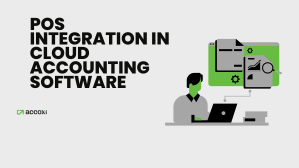

May 18, 2023

Accounting standards play an important role in a company’s financial statements. A company needs to abide by accounting rules to prevent financial risks and fraud in its statements.
Accounting standards are rules that guide the preparation and presentation of financial information in organizations and cover multiple areas of financial reporting, such as revenue recognition, inventory valuation, and depreciation. Below are some examples of common accounting standards around the world.
In the United States, GAAP refers to the standards that manage the creation and preparation of financial statements.
IFRS is an accounting system created by the International Accounting Standards Board and is currently used in many countries around the world, such as the European Union, Australia, and Canada.
Ind AS (Indian Accounting System) is an accounting system developed by the Indian Institute of Chartered Accountants (ICAI).
The Indian AS has been derived from the globally accepted International Financial Reporting Standards (IFRS) that are mandated by the esteemed International Accounting Standards Board (IASB). The ICAI in India has 32 accounting standards. AS-1 to AS-29 are mandatory. Here, we give a brief explanation of accounting standards.
Under this standard, companies must disclose the key accounting policies used in the preparation and presentation of financial statements. It also helps them know their financial position.
This standard deals with the valuation of inventories and prescribes the methods of determining the value of inventories, like the first-in, first-out (FIFO) method, the weighted financial value method, and therefore, the specific identification method.
Income statements show how much money a company has in and out of the company during a certain period. The income statement is used to evaluate a company's cash position and ability to pay debts. It aids financial statement users in assessing liquidity.
According to this rule, companies must reveal any significant events or potential issues that happened after the record date but before approving financial statements. With the support of such disclosures, users of financial statements can assess the company's potential liabilities and risks.
This standard is about fixing mistakes and making changes to how accounting was done in previous periods. It involves calculating the amount of net income or loss.
According to AS 6, depreciation is the systematic allocation of the depreciable amount of an asset over its useful life. The depreciable amount is the cost of an asset, or other amount substituted for cost, less its estimated residual value.
It explains the rules of building contracts in the financial reports of building contractors. This standard offers guidelines to follow and takes responsibility for revenue and expenses associated with lengthy construction contracts.
This standard reveals the criteria for capitalizing and reducing development costs and provides guidelines on how to manage accounts for Research and Development(R&D) costs according to Indian accounting standards.
This standard covers the recognition of revenue in a company's financial statements. It imposes the concepts and techniques for recognizing revenue from the sale of goods, the performance of services, and the use of the company's assets by others.
This rule tells how to handle the accounting of fixed assets, such as land, buildings, and equipment. It deals with the popularity, measurement, depreciation, and disposal of fixed assets.
This standard sets rules for foreign exchange transactions, which affect the foreign exchange rates for all foreign operations.
This accounting standard is about government grants, which include subsidies, rate defects, and incentives, among others. It aims to provide clear guidelines for accounting.
The standard also requires disclosure of the accounting principles applied to the investments, the amount of each investment category, and the fair value or value of the investments at the end of the reporting period.
Ind AS-14 deals with accounting for mergers and acquisitions. A merger occurs when two or more companies are combined into a new entity with no transfer of ownership between the parties. An acquisition is when one company acquires the assets and liabilities of another company.
This standard requires companies to record employee benefit costs in the financial statements as an expense in the financial period in which the employee earns the benefit.
This rule is about how to handle the costs of borrowing money, such as interest charges on loans. Under this standard, borrowing costs specifically attributable to the securing, development, or generation of a qualifying asset are capitalized as part of the fetched assets.
The standard requires organizations to publish financial and non-financial information about the segments, such as revenue, expenses, assets, liabilities, and other indicators used internally to evaluate segment performance.
Companies must disclose transactions with linked parties, their nature, and the amounts involved under the requirement.
Ind AS 19 leases are used to disclose their operating and financial arrangements for lessees and lessors. For lessees, assets depreciate over the lease term, while their liabilities decrease when lease payments are paid. For lessors, leases are different depending on whether they are operational or finance leases.
The Ind AS 20 Earnings Per Share discloses the earnings per share in a company and shows how much money the company makes for its shares and stocks.
This standard deals with the consolidated financial statement of a group of firms under the control of parent firms. It discloses financial statements of all the subsidiaries of parent firms such as name, ownership interest, equity shares, and minority interests.
These standard deals with the accounting treatment of income taxes. The tax income displayed on financial statements varies due to various reasons, making it difficult to link taxes with revenue over time.
This standard addresses the accounting treatment of associate investments in consolidated financial statements. An associate is a company where the investor has significant power but not full authority over its financial and operational policies. Organizations need to have subsidiaries, joint ventures, or associates because it explains how to account for these investments and generates consolidated financial statements that reflect the organization's financial performance and position.
According to AS 24, a firm that has decided to end operations must recognize and measure the assets and liabilities of the discontinued operation separately and present the results of the discontinued operation separately in the financial statements.
Interim financial reports typically include a balance sheet, an income statement, a cash flow statement, and financial statements of a company for a short period of time.
This standard specifies how to handle and disclose requirements for intangible assets, which are valued assets that lack a physical form but have economic value.
The ICAI's AS-27 focuses on creating rules for accounting and reporting related to joint ventures. This includes recording assets, liabilities, income, and expenses in the financial statements of those investing and venturing.
This standard deals with reduction value of assets and ensures that the amount carrying the asset does not exceed the recoverable amount. If the carrying amount exceeds the recoverable value, the asset is considered impaired, and the firm must record an impairment loss.
The disclosure of provisions, contingent liabilities, and contingent assets is required by this standard. Contingent assets and liabilities are possible assets and liabilities that are contingent on the happening of uncertain future events. Provisions are liabilities that are certain or very likely to occur, but the amount or timing of payment is unpredictable.
The standard establishes the criteria for recognizing, measuring, and reporting financial instruments in the financial statements of an organization. Financial instruments include loans and receivables, as well as investments in equities and debt securities, whereas financial liabilities include borrowings, trade payables, and derivatives.
According to Ind AS 31, joint arrangement parties must disclose in their financial statements the rights and duties resulting from the agreement. This standard discusses financial instrument presentation and defines guidelines for presenting financial instruments as liabilities or equity, as well as balancing financial assets and liabilities.
This standard lays out the guidelines for disclosing financial instruments as either equity instruments, financial obligations, or both. This standard discloses all financial instruments, its primary goal is to improve transparency and comparability of financial statements related to financial instruments and help users make informed decisions.
Accounting standards play a key role in ensuring the transparency, consistency, and accuracy of the company's financial reporting. Therefore, companies need to know the updated accounting standards. Say goodbye to the tedious accounting process and switch to cloud-based accounting. Switch to Accoxi,a cloud-based accounting software a powerful tool that simplifies your accounting process and allows you to track your expenses, and manage your cash flow in real-time.


